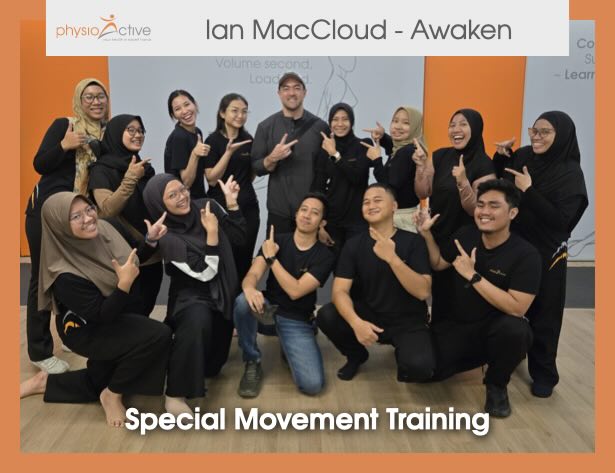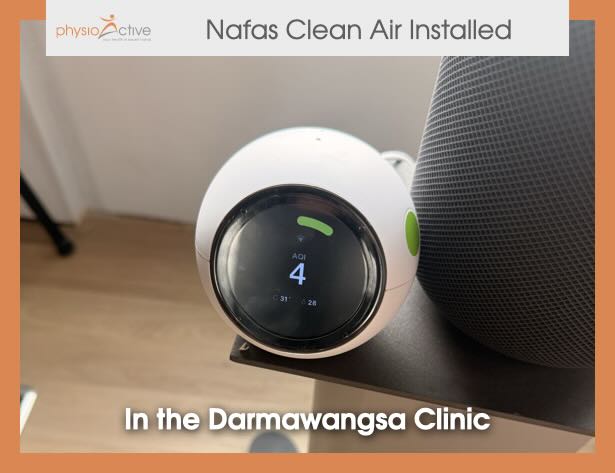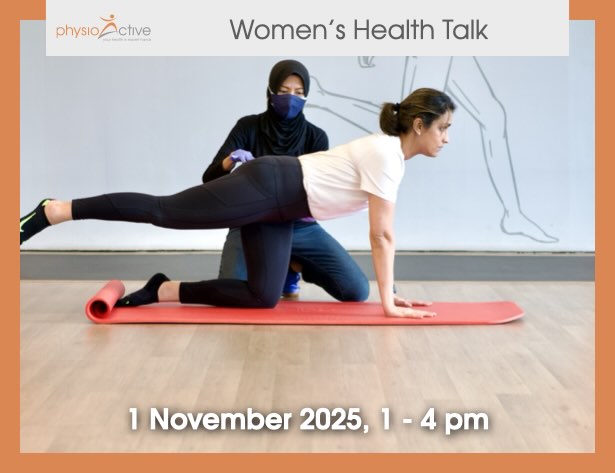Tips on using your smartphone smarter
Physioactive strives to provide you with the ideal treatment and awareness to live a good quality, pain-free life.
Have a look at our “Ergonomics 101” series to better understand the ideal environment for your everyday lifestyle.
If you need further assistance with pain injury management or ergonomics, visit our website for details.
If you want to make an appointment, you can do so online or send us a whatsapp
Smartphones in every day use
Hi there. Welcome back to our 101 ergonomics series with physio active. In this video, we will be covering tips on how to use your smartphone ergonomically including activating the features on your smartphone to avoid overuse injuries.
Introducing Ayu the tiger mom. She is a stout lady looking over her children and the household efficiently so she can prioritize her social life. In her spare time, she keeps up with trends through social media on her phone – even at the expense of sore thumbs.
She argued that everything could be done on her smart-phone: online shopping, groceries, socializing, and more. With a whole list of possibilities at her fingertips, it’s not surprising that she has developed a dependency on her little pocket-rocket.
Briefly going back to the fundamentals of ergonomics, the 3 important factors to prevent injuries are:
- Proper posture
- Managing forces and…
- Excessive repetitive motions
Clearly, in Ayu’s case, she needs to be aware of points 1 and 3.
Smartphone related injuries can occur as a result of static and awkward postures. Your neck and shoulders can be affected during long phone calls. Your hands, wrist, and eyes can be affected while reading on a small screen.
Tips
Let’s discuss a few tips that might help reduce these overuse types of injuries.
- When using your cell phone, maintain a neutral wrist posture, keeping it as relaxed as possible and alternating between hands when holding devices.
- Switch between thumbs and index fingers when typing or scrolling – Only using your thumbs to type can lead to an undesirable repetitive strain injury otherwise known as De Quervain syndrome.
- Try using dictation instead of typing. Let us show you how.
- If you are using an iPhone
- Go to settings -> General -> Keyboards and make sure the Dictation option is enabled
- Choose the languages for which you would like to enable dictation.
- After you have done this, whenever you need to type, find the microphone symbol, press once to start dictation, and once again to stop, or you can click on send directly.
- Like this…
- Hi Physioactive, can I book an appointment for tomorrow, please…
- If you are using an Android phone
- Make sure you have google keyboard, also known as gboard installed, which can be found on the play store
- After you have done this you will find a small microphone icon on the top right corner of your keyboard. Press once to start dictation, and again to stop.
- Like this….
- Thank you for the confirmation, I will see you tomorrow…
- If you are using an iPhone
- Use the built-in digital assistants (more familiarly known as Apple Siri or Google Assistant) to carry out various handy actions by voice instructions. Lets help familiarize you with this:
- On an iPhone please make sure that Siri is enabled. Go to settings -> Siri and Search and enable how you want to activate Siri.
- Now you can press and hold your home or just say: Hey Siri, call Physioactive Indonesia….
- Or if you would like to set a reminder, say: Hey Siri, remind me to p Ice Cream for the kids after my appointment.
- Or search the internet: Hey Siri, find the best physiotherapy clinic in Jakarta on Google…
- If you are using an Android phone, press and hold the home button on the bottom of the screen. If this is the first time, click on Turn On.
- Now you can say: Ok Google call Physioactive Indonesia
- Or: OK Google remind me to pick up the groceries tonight at 8 pm.
- Or if you are looking for: Ok Google find pediatric physiotherapy in South Jakarta
- On an iPhone please make sure that Siri is enabled. Go to settings -> Siri and Search and enable how you want to activate Siri.
- Other than using the assistant features, if you feel eye strain or a headache, you can adjust the brightness of your screen.
- Pay attention to your neck posture when reading from your device. Instead of tilting your neck, bring the device to a comfortable position, and lower your gaze rather than your whole head.
- Use headphones or a Bluetooth earpiece to free up your hands and get your body out of awkward positions, especially during long phone calls – remember every change is an opportunity to think and realign your posture.
Hopefully, this video will help make your mobile phone experience pain free.
In our next video, we will cover some key aspects of work from home ergonomics. In the meantime, we wish you a healthy and pain-free day. If you are in pain, please book an appointment on our website or give us a call.



